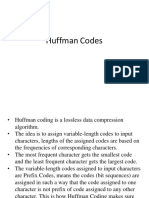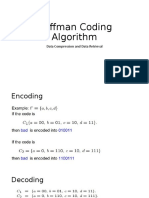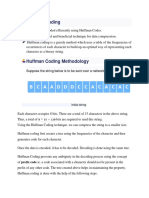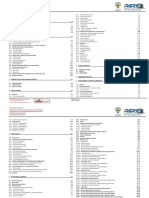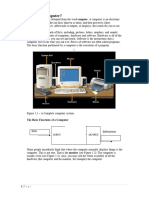0% found this document useful (0 votes)
8 views12 pages5.2 Huffman Algorithm
Uploaded by
bsse1642Copyright
© © All Rights Reserved
We take content rights seriously. If you suspect this is your content, claim it here.
Available Formats
Download as PPT, PDF, TXT or read online on Scribd
0% found this document useful (0 votes)
8 views12 pages5.2 Huffman Algorithm
Uploaded by
bsse1642Copyright
© © All Rights Reserved
We take content rights seriously. If you suspect this is your content, claim it here.
Available Formats
Download as PPT, PDF, TXT or read online on Scribd
/ 12


